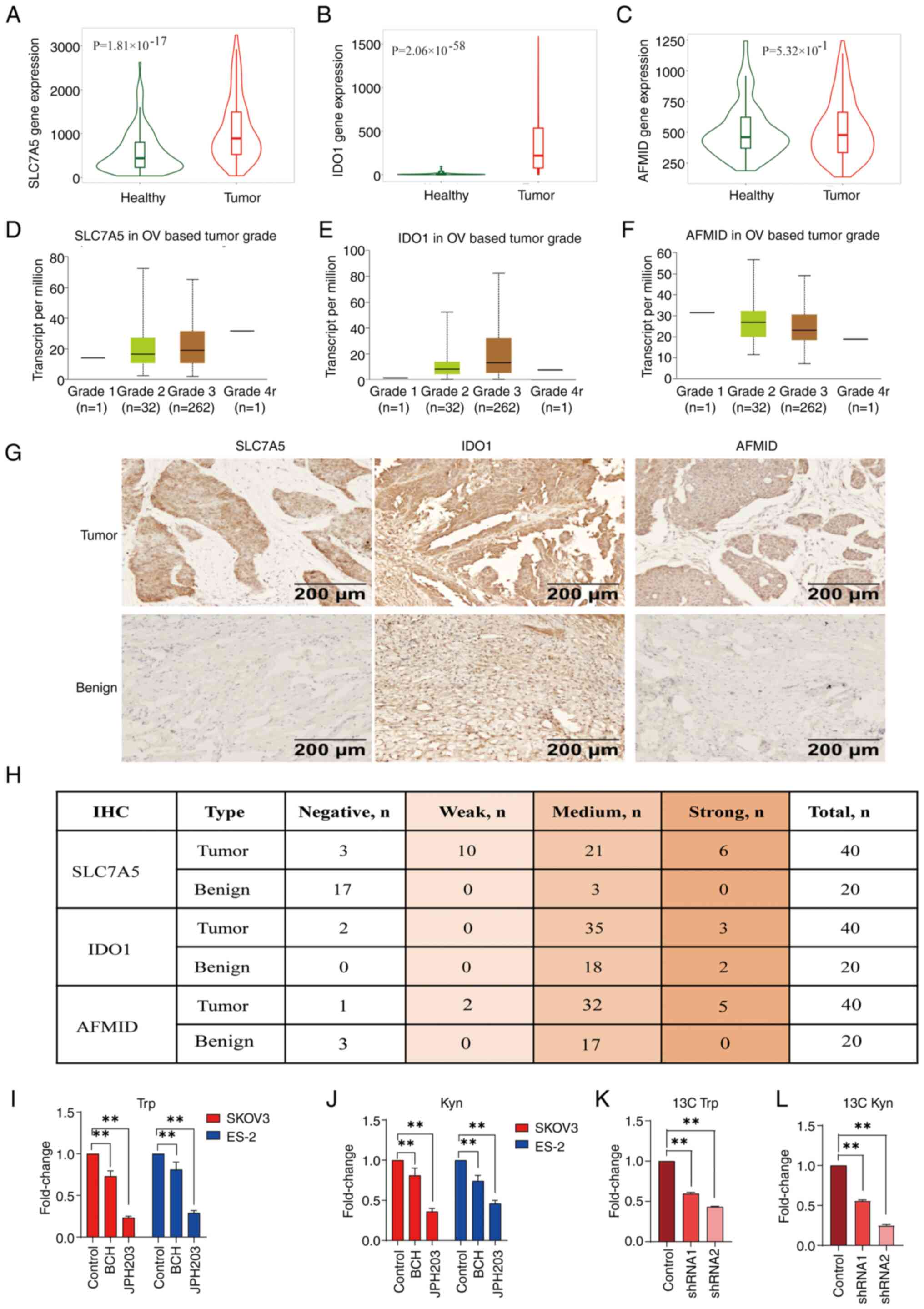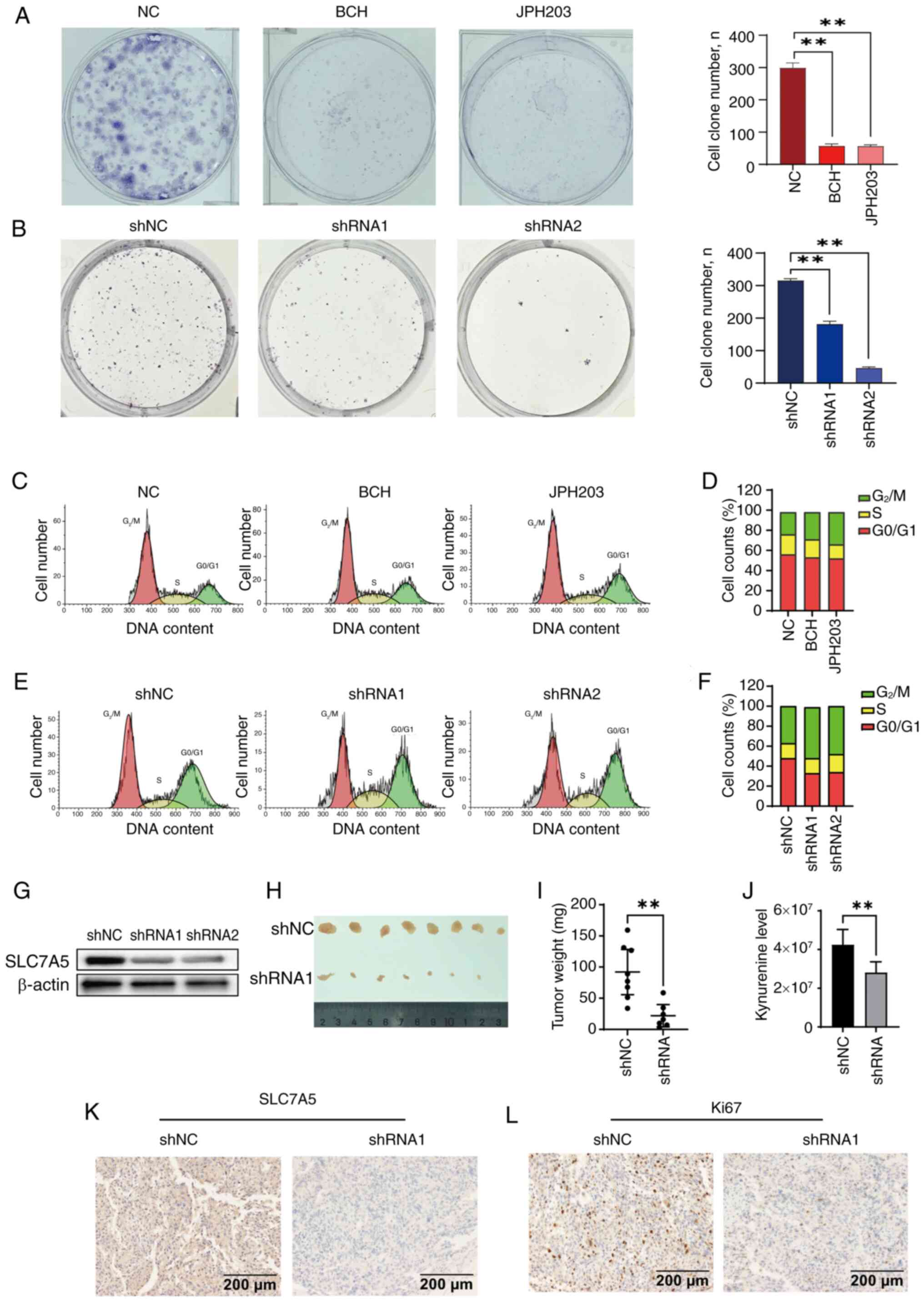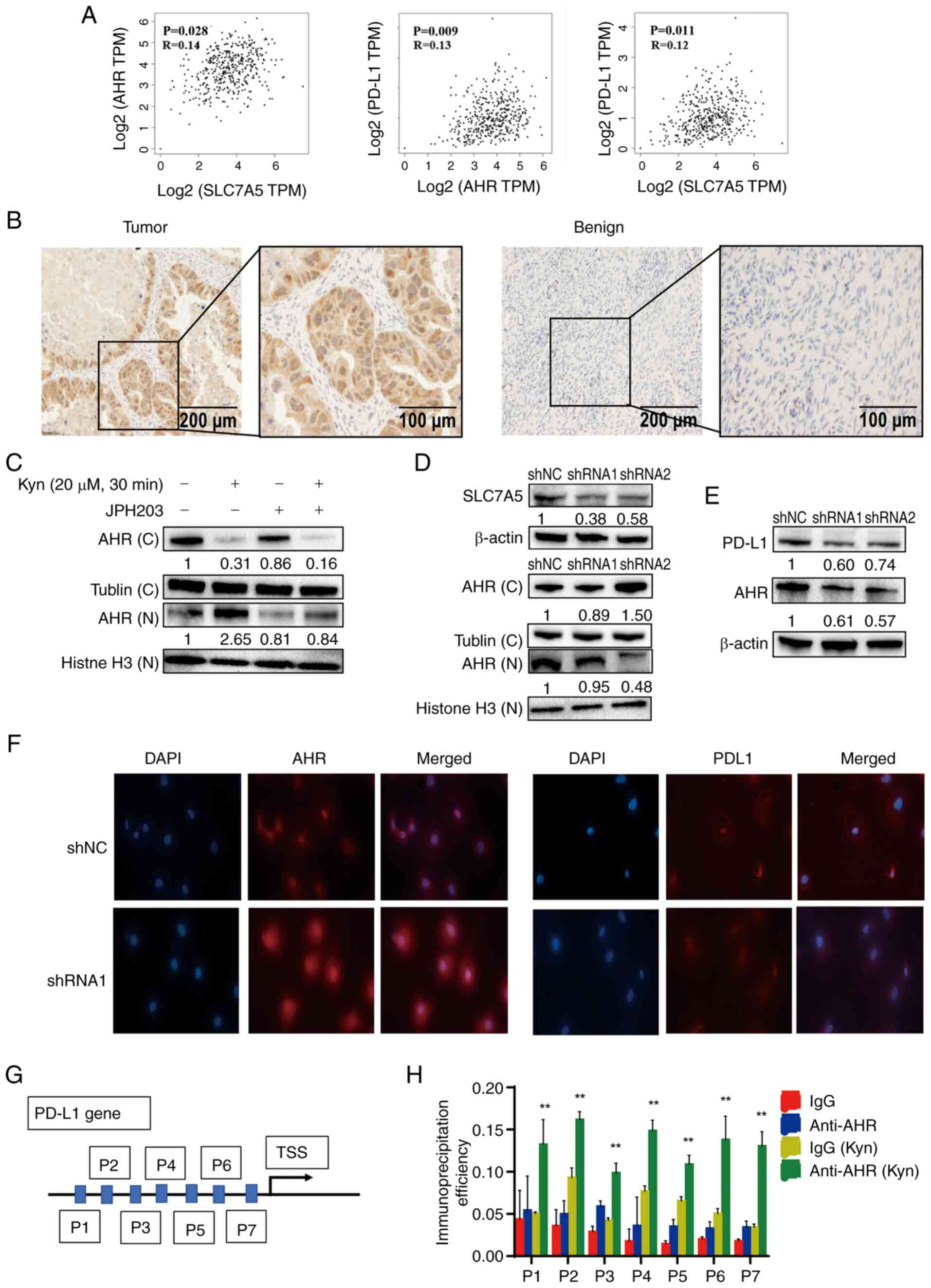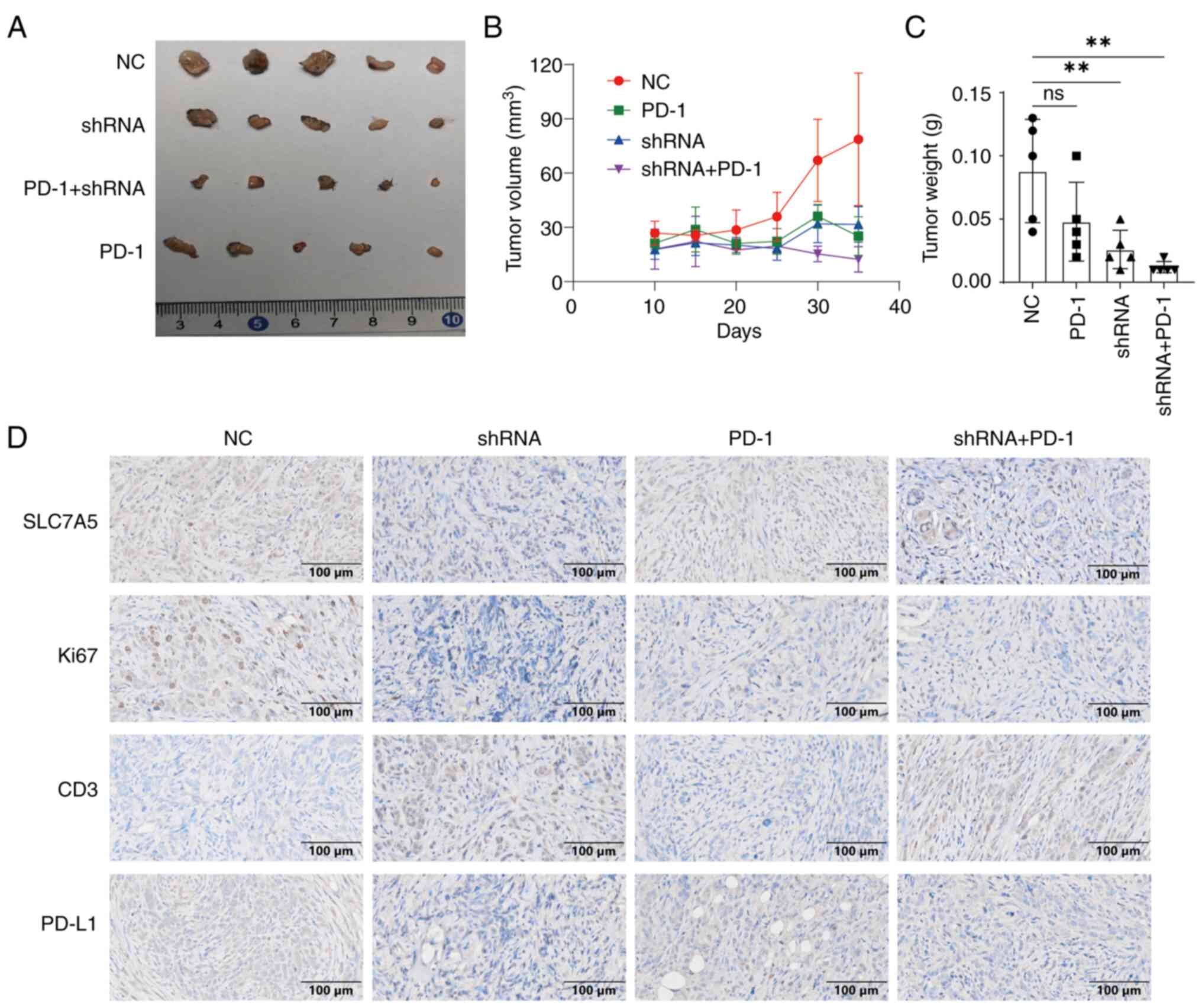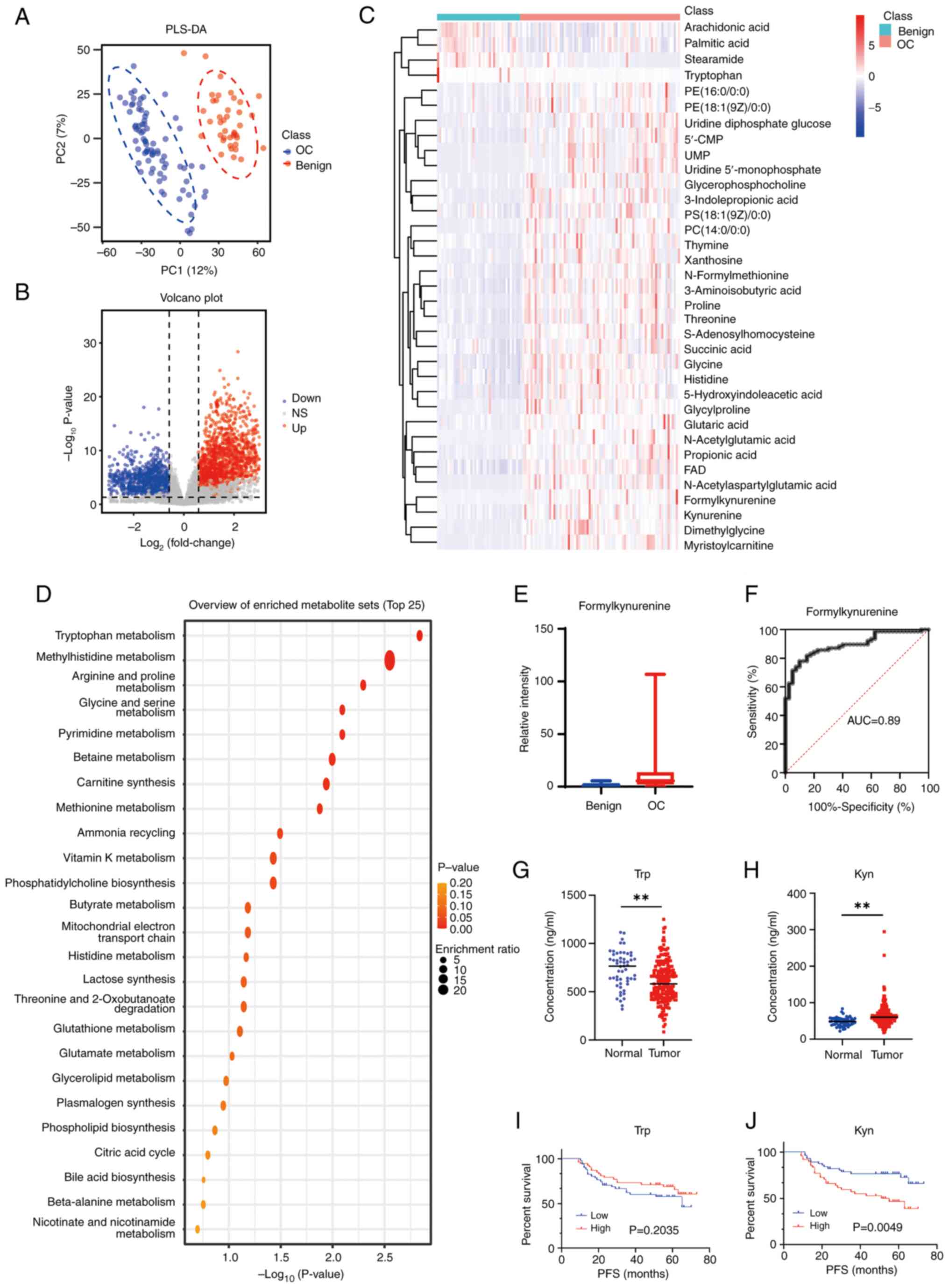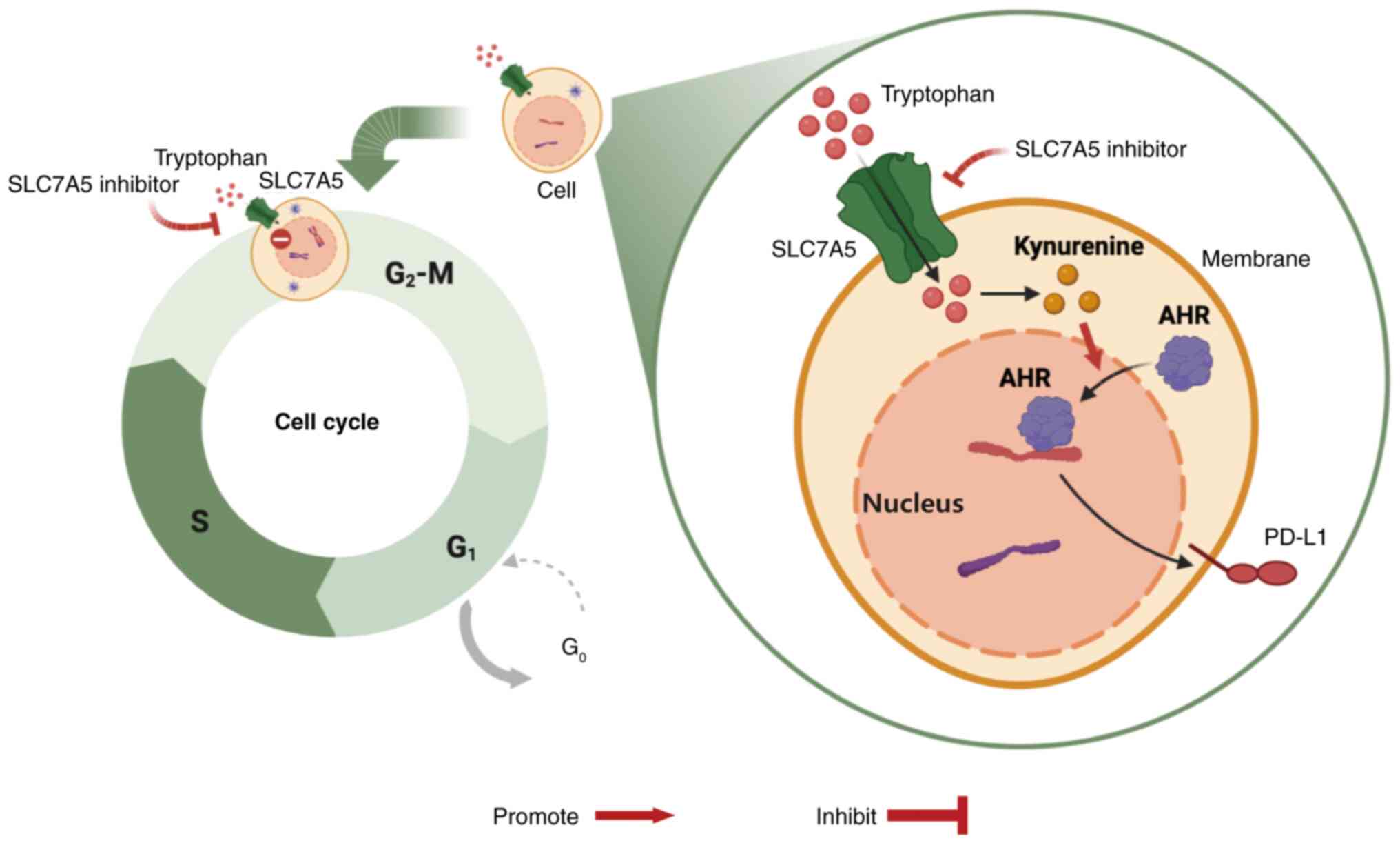|
1
|
Oza AM, Pierce A, Lau A, Kurian N, Parr G,
Lao-Sirieix SH, Ah-See MLW, Dean E and Loembé B: DUETTE: A
randomized phase II study to assess a second maintenance treatment
with olaparib (ola) or ola+ceralasertib (cer), in patients (pts)
with platinum-sensitive relapsed (PSR) epithelial ovarian cancer
who have previously received PARP inhibitor maintenance treatment
(NCT04239014). J Clin Oncol. 38 (15 Suppl):TPS61042020. View Article : Google Scholar
|
|
2
|
Ruibin J, Bo J, Danying W, Jianguo F and
Linhui G: Cardamonin induces G2/M phase arrest and apoptosis
through inhibition of NF-κB and mTOR pathways in ovarian cancer.
Aging (Albany NY). 12:25730–25743. 2020. View Article : Google Scholar : PubMed/NCBI
|
|
3
|
Ruibin J, Bo J, Danying W, Chihong Z,
Jianguo F and Linhui G: Therapy effects of wogonin on ovarian
cancer cells. Biomed Res Int. 2017:93815132017. View Article : Google Scholar : PubMed/NCBI
|
|
4
|
De La Franier B and Thompson M: Early
stage detection and screening of ovarian cancer: A research
opportunity and significant challenge for biosensor technology.
Biosens Bioelectron. 135:71–81. 2019. View Article : Google Scholar : PubMed/NCBI
|
|
5
|
Jiang R, Chen Z, Ni M, Li X, Ying H, Fen
J, Wan D, Peng C, Zhou W and Gu L: A traditional gynecological
medicine inhibits ovarian cancer progression and eliminates cancer
stem cells via the LRPPRC-OXPHOS axis. J Transl Med. 21:5042023.
View Article : Google Scholar : PubMed/NCBI
|
|
6
|
Cai Y, Wang Z, Guo S, Lin C, Yao H, Yang
Q, Wang Y, Yu X, He X, Sun W, et al: Detection, mechanisms, and
therapeutic implications of oncometabolites. Trends Endocrinol
Metab. 34:849–861. 2023. View Article : Google Scholar : PubMed/NCBI
|
|
7
|
Yang K, Wang X, Song C, He Z, Wang R, Xu
Y, Jiang G, Wan Y, Mei J and Mao W: The role of lipid metabolic
reprogramming in tumor microenvironment. Theranostics.
13:1774–1808. 2023. View Article : Google Scholar : PubMed/NCBI
|
|
8
|
Wang Z, Wu X, Chen HN and Wang K: Amino
acid metabolic reprogramming in tumor metastatic colonization.
Front Oncol. 13:11231922023. View Article : Google Scholar : PubMed/NCBI
|
|
9
|
Zheng Y, Yao Y, Ge T, Ge S, Jia R, Song X
and Zhuang A: Amino acid metabolism reprogramming: Shedding new
light on T cell anti-tumor immunity. J Exp Clin Cancer Res.
42:2912023. View Article : Google Scholar : PubMed/NCBI
|
|
10
|
Dang CV: Links between metabolism and
cancer. Genes Dev. 26:877–890. 2012. View Article : Google Scholar : PubMed/NCBI
|
|
11
|
Daye D and Wellen KE: Metabolic
reprogramming in cancer: Unraveling the role of glutamine in
tumorigenesis. Semin Cell Dev Biol. 23:362–369. 2012. View Article : Google Scholar : PubMed/NCBI
|
|
12
|
Xiao Z, Dai Z and Locasale JW: Metabolic
landscape of the tumor microenvironment at single cell resolution.
Nat Commun. 10:37632019. View Article : Google Scholar : PubMed/NCBI
|
|
13
|
Vander Heiden MG, Cantley LC and Thompson
CB: Understanding the Warburg effect: The metabolic requirements of
cell proliferation. Science. 324:1029–1033. 2009. View Article : Google Scholar : PubMed/NCBI
|
|
14
|
Liberti MV and Locasale JW: The Warburg
effect: How does it benefit cancer cells? Trends Biochem Sci.
41:211–218. 2016. View Article : Google Scholar : PubMed/NCBI
|
|
15
|
Pavlova NN and Thompson CB: The emerging
hallmarks of cancer metabolism. Cell Metab. 23:27–47. 2016.
View Article : Google Scholar : PubMed/NCBI
|
|
16
|
Friedrich M, Sankowski R, Bunse L, Kilian
M, Green E, Guevara CR, Pusch S, Poschet G, Sanghvi K, Hahn M, et
al: Tryptophan metabolism drives dynamic immunosuppressive myeloid
states in IDH-mutant gliomas. Nat Cancer. 2:723–740. 2021.
View Article : Google Scholar : PubMed/NCBI
|
|
17
|
Chen W, Wen L, Bao Y, Tang Z, Zhao J,
Zhang X, Wei T, Zhang J, Ma T, Zhang Q, et al: Gut flora
disequilibrium promotes the initiation of liver cancer by
modulating tryptophan metabolism and up-regulating SREBP2. Proc
Natl Acad Sci a USA. 119:e22038941192022. View Article : Google Scholar
|
|
18
|
Venancio PA, Consolaro MEL, Derchain SF,
Boccardo E, Villa LL, Maria-Engler SS, Campa A and Discacciati MG:
Indoleamine 2,3-dioxygenase and tryptophan 2,3-dioxygenase
expression in HPV infection, SILs, and cervical cancer. Cancer
Cytopathol. 127:586–597. 2019. View Article : Google Scholar : PubMed/NCBI
|
|
19
|
Ala M: Tryptophan metabolites modulate
inflammatory bowel disease and colorectal cancer by affecting
immune system. Int Rev Immunol. 41:326–345. 2022. View Article : Google Scholar : PubMed/NCBI
|
|
20
|
Austin CJD and Rendina LM: Targeting key
dioxygenases in tryptophan-kynurenine metabolism for
immunomodulation and cancer chemotherapy. Drug Discov Today.
20:609–617. 2015. View Article : Google Scholar : PubMed/NCBI
|
|
21
|
Lee SH, Mahendran R, Tham SM, Thamboo TP,
Chionh BJ, Lim YX, Tsang WC, Wu QH, Chia JY, Tay MHW, et al:
Tryptophan-kynurenine ratio as a biomarker of bladder cancer. BJU
Int. 127:445–453. 2021. View Article : Google Scholar : PubMed/NCBI
|
|
22
|
Greene LI, Bruno TC, Christenson JL,
D'Alessandro A, Culp-Hill R, Torkko K, Borges VF, Slansky JE and
Richer JK: A role for tryptophan-2,3-dioxygenase in CD8 T-cell
suppression and evidence of tryptophan catabolism in breast cancer
patient plasma. Mol Cancer Res. 17:131–139. 2019. View Article : Google Scholar : PubMed/NCBI
|
|
23
|
Qin R, Zhao C, Wang CJ, Xu W, Zhao JY, Lin
Y, Yuan YY, Lin PC, Li Y, Zhao S and Huang Y: Tryptophan
potentiates CD8+ T cells against cancer cells by TRIP12
tryptophanylation and surface PD-1 downregulation. J Immunother
Cancer. 9:e0028402021. View Article : Google Scholar : PubMed/NCBI
|
|
24
|
Cheong JE and Sun L: Targeting the
IDO1/TDO2-KYN-AhR pathway for cancer immunotherapy-challenges and
opportunities. Trends Pharmacol Sci. 39:307–325. 2018. View Article : Google Scholar : PubMed/NCBI
|
|
25
|
Nambirajan A, Malgulwar PB, Sharma A,
Boorgula MT, Doddamani R, Singh M, Suri V, Sarkar C and Sharma MC:
Clinicopathological evaluation of PD-L1 expression and cytotoxic
T-lymphocyte infiltrates across intracranial molecular subgroups of
ependymomas: Are these tumors potential candidates for immune
check-point blockade? Brain Tumor Pathol. 36:152–161. 2019.
View Article : Google Scholar : PubMed/NCBI
|
|
26
|
Wu B, Song M, Dong Q, Xiang G, Li J, Ma X
and Wei F: UBR5 promotes tumor immune evasion through enhancing
IFN-γ-induced PDL1 transcription in triple negative breast cancer.
Theranostics. 12:5086–5102. 2022. View Article : Google Scholar : PubMed/NCBI
|
|
27
|
Chen Z, Gao Y, Huang X, Yao Y, Chen K,
Zeng S and Mao W: Tissue-based metabolomics reveals metabolic
biomarkers and potential therapeutic targets for esophageal
squamous cell carcinoma. J Pharm Biomed Anal. 197:1139372021.
View Article : Google Scholar : PubMed/NCBI
|
|
28
|
Livak KJ and Schmittgen TD: Analysis of
relative gene expression data using real-time quantitative PCR and
the 2(−Delta Delta C(T)) method. Methods. 25:402–408. 2001.
View Article : Google Scholar : PubMed/NCBI
|
|
29
|
Gostner JM, Obermayr E, Braicu IE, Concin
N, Mahner S, Vanderstichele A, Sehouli J, Vergote I, Fuchs D and
Zeillinger R: Immunobiochemical pathways of neopterin formation and
tryptophan breakdown via indoleamine 2,3-dioxygenase correlate with
circulating tumor cells in ovarian cancer patients-A study of the
OVCAD consortium. Gynecol Oncol. 149:371–380. 2018. View Article : Google Scholar : PubMed/NCBI
|
|
30
|
Xia L, Oyang L, Lin J, Tan S, Han Y, Wu N,
Yi P, Tang L, Pan Q, Rao S, et al: The cancer metabolic
reprogramming and immune response. Mol Cancer. 20:282021.
View Article : Google Scholar : PubMed/NCBI
|
|
31
|
Platten M, Wick W and Van den Eynde BJ:
Tryptophan catabolism in cancer: Beyond IDO and tryptophan
depletion. Cancer Res. 72:5435–5440. 2012. View Article : Google Scholar : PubMed/NCBI
|
|
32
|
Mor A, Tankiewicz-Kwedlo A and Pawlak D:
Kynurenines as a novel target for the treatment of malignancies.
Pharmaceuticals (Basel). 14:6062021. View Article : Google Scholar : PubMed/NCBI
|
|
33
|
Garcia R and Conacci Sorrell M:
Investigating the tryptophan-metabolizing enzyme AFMID
(arylformamidase) in colon cancer. FASEB J. 36:2022. View Article : Google Scholar
|
|
34
|
Van den Eynde BJ, van Baren N and Baurain
JF: Is there a clinical future for IDO1 inhibitors after the
failure of epacadostat in melanoma? Ann Rev Cancer Biol. 4:241–256.
2020. View Article : Google Scholar
|
|
35
|
Chen S, Tan J and Zhang A: The ups, downs
and new trends of IDO1 inhibitors. Bioorg Chem. 110:1048152021.
View Article : Google Scholar : PubMed/NCBI
|
|
36
|
Kim C, Lee NK, Kim JS, Kim WR, Kim DH, Kim
DJ, Oh JS, Chang SK, Kim JW and Chon HJ: An oral dual inhibitor of
IDO and TDO enhances anti-cancer immunity and synergizes with
immune checkpoint blockade. Ann Oncol. 29:viii4162018. View Article : Google Scholar
|
|
37
|
Yanagida O, Kanai Y, Chairoungdua A, Kim
DK, Segawa H, Nii T, Cha SH, Matsuo H, Fukushima J, Fukasawa Y, et
al: Human L-type amino acid transporter 1 (LAT1): Characterization
of function and expression in tumor cell lines. Biochim Biophys
Acta. 1514:291–302. 2001. View Article : Google Scholar : PubMed/NCBI
|
|
38
|
Yan R, Zhao X, Lei J and Zhou Q: Structure
of the human LAT1-4F2hc heteromeric amino acid transporter complex.
Nature. 568:127–130. 2019. View Article : Google Scholar : PubMed/NCBI
|
|
39
|
Zhu Q, Wang J, Shi Y, Zha X and Wang S:
Bioinformatics prediction and in vivo verification identify SLC7A5
as immune infiltration related biomarker in breast cancer. Cancer
Manag Res. 14:2545–2559. 2022. View Article : Google Scholar : PubMed/NCBI
|
|
40
|
Liu Y, Ma G, Liu J, Zheng H, Huang G, Song
Q, Pang Z and Du J: SLC7A5 is a lung adenocarcinoma-specific
prognostic biomarker and participates in forming immunosuppressive
tumor microenvironment. Heliyon. 8:e108662022. View Article : Google Scholar : PubMed/NCBI
|
|
41
|
Saito Y and Soga T: Amino acid
transporters as emerging therapeutic targets in cancer. Cancer Sci.
112:2958–2965. 2021. View Article : Google Scholar : PubMed/NCBI
|
|
42
|
Ding K, Tan S, Huang X, Wang X, Li X, Fan
R, Zhu Y, Lobie PE, Wang W and Wu Z: GSE1 predicts poor survival
outcome in gastric cancer patients by SLC7A5 enhancement of tumor
growth and metastasis. J Biol Chem. 293:3949–3964. 2018. View Article : Google Scholar : PubMed/NCBI
|
|
43
|
Shennan DB and Thomson J: Inhibition of
system L (LAT1/CD98hc) reduces the growth of cultured human breast
cancer cells. Oncol Rep. 20:885–889. 2008.PubMed/NCBI
|
|
44
|
Rajasinghe LD, Hutchings M and Gupta SV:
Delta-tocotrienol modulates glutamine dependence by inhibiting
ASCT2 and LAT1 transporters in non-small cell lung cancer (NSCLC)
cells: A metabolomic approach. Metabolites. 9:502019. View Article : Google Scholar : PubMed/NCBI
|
|
45
|
Xu M, Sakamoto S, Matsushima J, Kimura T,
Ueda T, Mizokami A, Kanai Y and Ichikawa T: Up-regulation of LAT1
during Antiandrogen therapy contributes to progression in prostate
cancer cells. J Urol. 195:1588–1597. 2016. View Article : Google Scholar : PubMed/NCBI
|
|
46
|
Hayashi K, Kaminuma O, Nishimura T, Saeki
M, Matsuoka K, Hiroi T, Jutabha P, Iwata Y, Sugiura K, Owada T, et
al: LAT1-specific inhibitor is effective against T cell-mediated
allergic skin inflammation. Allergy. 75:463–467. 2020. View Article : Google Scholar : PubMed/NCBI
|
|
47
|
Cibrian D, Saiz ML, de la Fuente H,
Sánchez-Díaz R, Moreno-Gonzalo O, Jorge I, Ferrarini A, Vázquez J,
Punzón C, Fresno M, et al: CD69 controls the uptake of L-tryptophan
through LAT1-CD98 and AhR-dependent secretion of IL-22 in
psoriasis. Nat Immunol. 17:985–996. 2016. View Article : Google Scholar : PubMed/NCBI
|
|
48
|
Budhwar S, Bahl C, Sharma S, Singh N and
Behera D: Role of sequence variations in AhR gene towards
modulating smoking induced lung cancer susceptibility in north
indian population: A multiple interaction analysis. Curr Genomics.
19:313–326. 2018. View Article : Google Scholar : PubMed/NCBI
|
|
49
|
Helou DG, Shafiei-Jahani P, Hurrell BP,
Painter JD, Quach C, Howard E and Akbari O: LAIR-1 acts as an
immune checkpoint on activated ILC2s and regulates the induction of
airway hyperreactivity. J Allergy Clin Immunol. 149:223–236.e6.
2022. View Article : Google Scholar : PubMed/NCBI
|



